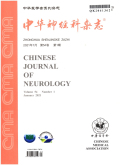摘要目的 探讨莱菔硫烷对体外1-甲基-4-苯基吡啶离子(MPP+)诱导的PC12细胞氧化损伤模型是否具有保护作用及其机制.方法 以MPP+损伤PC12细胞制备氧化损伤模型.不同浓度的莱菔硫烷加入培养基观察各组细胞生长情况.后续实验分成4组:正常对照组(A)、莱菔硫烷组(B)、MPP+损伤组(C)、莱菔硫烷预处理+MPP+损伤组(D).通过MTT比色法检测细胞活力,观察不同浓度莱菔硫烷预处理PC12细胞活力变化及不同分组PC12细胞活力变化;流式细胞术检测不同分组PC12细胞中细胞凋亡率的变化;免疫印迹法测定不同分组PC12细胞内转录因子相关因子2(Nrf2)、血红素加氧酶1(HO-1)及醌还原氧化酶1(NQ01)蛋白的表达变化.结果 A组细胞存活率(98.70%)与MPP+(500μmol/L)组(58.16%)相比差异有统计学意义(F =21.83,P<0.05),D组细胞存活率明显提高.C组细胞凋亡率升高,D组细胞与C组相比差异有统计学意义,莱菔硫烷预处理后细胞凋亡率明显减低.C组Nrf2、HO-1、NQ01蛋白表达下降,D组Nrf2、HO-1、NQ01蛋白表达升高.结论 莱菔硫烷对MPP+诱导的PC12细胞损伤具有保护作用,莱菔硫烷对MPP+诱导的PC12细胞损伤的保护作用可能通过激活Nrf2-抗氧化反应元件通路途径实现.
更多相关知识
abstractsObjective To investigate the effect of sulforaphane on 1-methyl-4-phenylpyridinium (MPP +)-induced cell viability loss in cultured PC12 cells and to explore the possible mechanism.Methods MPP + induced damage in PC12 cells was prepared as oxidative damage model.Sulforaphane (0.5,1.O,2.5,5.0 and 10.0 μmol/L) was added in each group cell growth medium.Subsequent experiments were divided into 4 groups:(A) normal control group,(B) sulforaphane group,(C) MPP+ injury group,(D)sulforaphane pretreatment + MPP+ injury group.Cell viability was detected by MTT assay,and the sulforaphane pretreatment PC12 cell viability was observed in different concentrations.Flow cytometry was used to detect changes in the rate of apoptosis in different packet PC12 cells,and protein expression levels of nuclear factor erythroid2-related factor 2 (Nrf2),heme oxygenase (HO-1) and human NAD (P) H dehydrogenase,quinone 1 (NQO1) were detected by Western blot when the PC12 cells were incubated with sulforaphane (2.5 μmol/L) and (or) MPP+ (500 μmol/L) for 24 h in vitro.Results Compared to control group (cell survival rate was 98.70%),the survival percents of PC12 cells were significantly decreased in MPP+-treated group (58.16%).A significant difference was showed between group A and C (F =21.83,P < 0.05),and the cell survival rate in group D was significantly improved.Compared to control group,the rate of apoptosis in MPP+ injury group was increased,and the rate of apoptosis after pretreatment of the sulforaphane was significantly reduced.Compared to MPP+ injury group,the levels of Nrf2,HO-1 and NQO1 protein expression were significantly increased in sulforaphane pretreatment group.Conclusion Sulforaphane have a protective effect against MPP+-induced PC12 cell model damage,and the protective effect may be achieved by activating the Nrf2-antioxidant response element pathway.
More相关知识
- 浏览469
- 被引3
- 下载88


相似文献
- 中文期刊
- 外文期刊
- 学位论文
- 会议论文



 换一批
换一批 换一批
换一批



